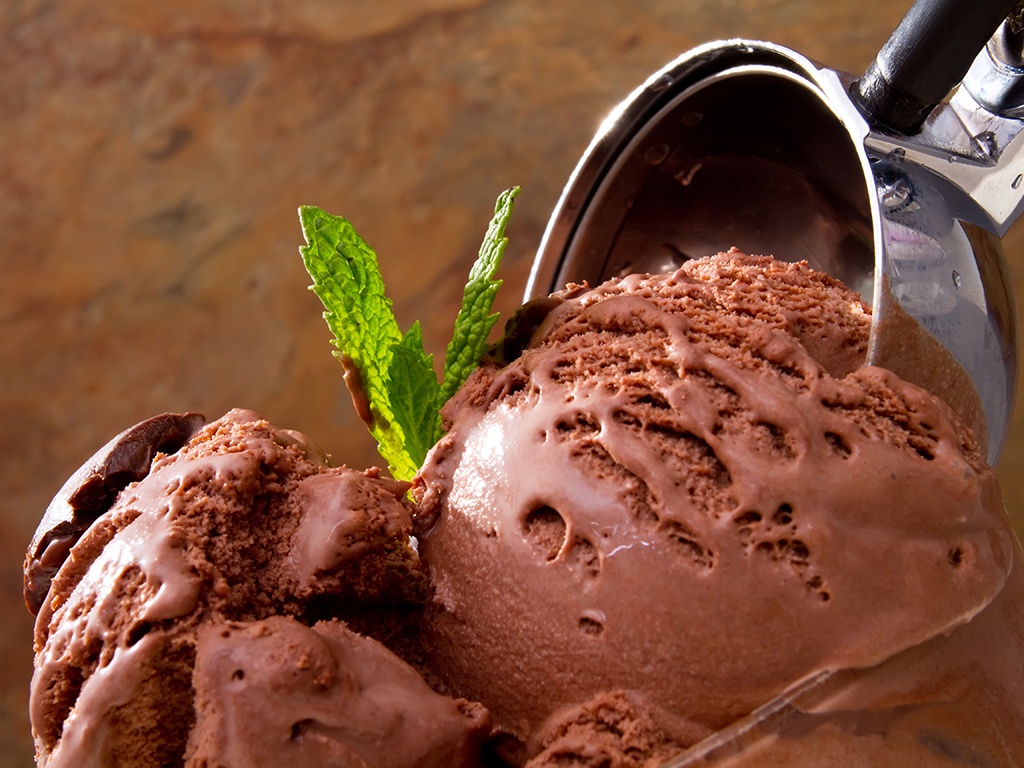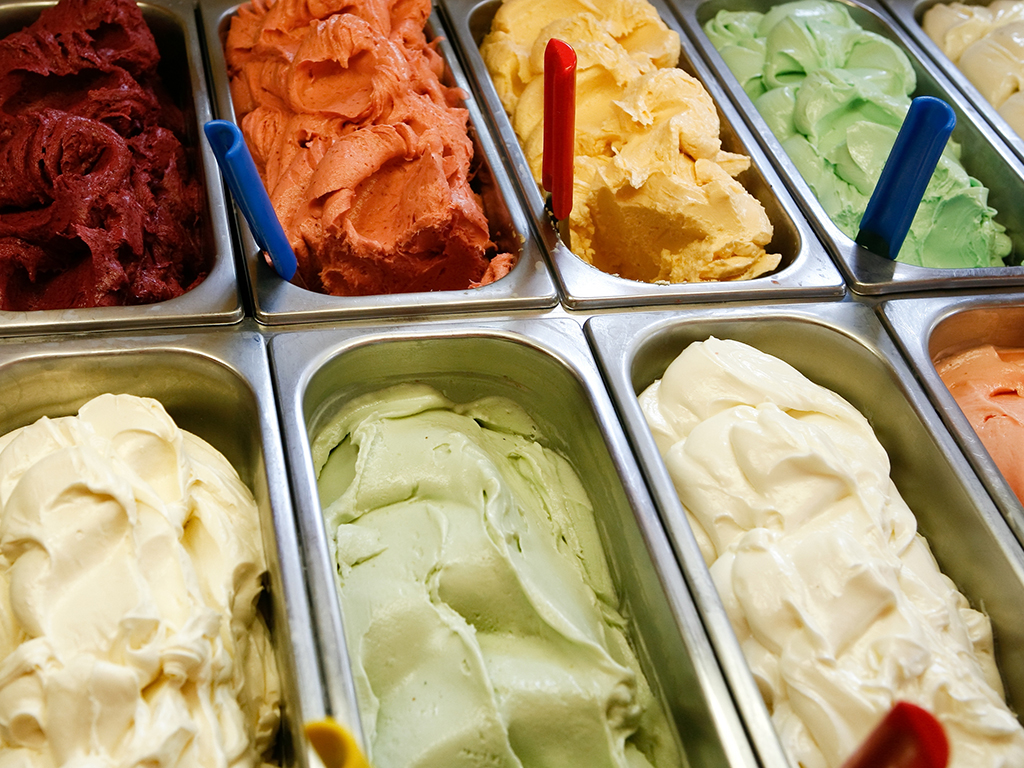Ice cream manufacture in Serbia grows increasingly sweet – Large producers export, small ones conquer Belgrade
In addition to being a favorite kind of refreshment for people of all ages during hot summer days, ice cream is also a profitable business. The production of ice cream in Serbia is getting more and more popular, and the combination of business and pleasure is best shown by the “sweet” statistics when it comes to Serbia's exports to the neighboring countries, but also to the EU states, where the numbers are constantly growing.
In addition to well know producers and exporters from Serbia, such as Frikom, Froneri Adriatic, Swisslion and Ice Planet d.o.o, smaller producers and pastry shops are also standing out, as they have been successfully operating in this branch of the food industry for years now.
One of the most popular places among ice cream aficionados is Crna Ovca. It was founded in 2012 out of love of good food, they say, and Ivan Zivic, one of the managers, says that his job is a pleasure at the same time.
He reveals that around EUR 150,000 was needed to start the business, but that they made a return on the investment after three years. They currently offer over 120 flavors, but the list doesn't end there, because they are constantly experimenting and looking for new flavors.
– As for the popularity, we are not the kind of ice cream shop where the most popular flavors are vanilla and chocolate (though they are popular). It's those that we are recognized for, such as walnut, which is still near the top of the list. There's also the Sesame Coffee, with chocolate coffee beans, Creme brulee with caramelized walnuts, Mascarpone Raspberry with roasted pistachios and others – Zivic explains.
As for other flavors, he says that they are picked based on which raw ingredients are available, as certain flavors are seasonal and can be produced only in certain parts of the year.
– For example, chestnuts are available from November till January only, and red oranges are available from February till April. Jostaberry is available in July or August. We use local ingredients whenever possible, but not at the expense of quality. Of course, there are ingredients which are not produced in Serbia and which need to be imported, such pistachios or mango, but there are some cases where Serbian products are among the best ones in the world, such as walnuts, raspberries, currants and others – Zivic adds.
When it comes to future plans, he reveals for eKapija that they are considering opening another shop in Belgrade, but there are no plans for further expansion in Serbia and the region at the moment.
Another example of successful practice is the famous Poslasticarnica in Belgrade, popular since the 1990s for its exotic flavors, such as ajvar-flavored ice cream, ice cream made of hard yellow cheese from Pirot, as well as a plum brandy ice cream or an ice cream with the Tamjanika Spasic wine flavor.
Veroljub Sobic, the owner of Poslasticarnica, emphasizes that the key factor in ice cream making is passions, and he says that the main goal of this family business he started with his wife is to make tasty, but above all healthy products.
– We have been in this business for a long time. When it comes to fruit, we don't use secondary ingredients, but fresh fruit, at the rate of 40-45%. You won't find mango, banana, or pineapple here, for the simple reason that Serbia has so much fruit, and we always try to go for the locally produced ones, but not at the expense of quality. There's no milk, sugar or aromas in my ice cream. The only ingredients we import are hazelnut, pistachio and almond pastes from Italy and vanilla sticks from Madagascar – Sobic points out.
– I'm trying to pick fruit that has not been chemically treated. For example, I favor the Karamanka pear, as it is an indigenous variety, unlike the Williams pear, which is very tasty, but has to be chemically treated several times before it ripens – he explains.
In addition to well know producers and exporters from Serbia, such as Frikom, Froneri Adriatic, Swisslion and Ice Planet d.o.o, smaller producers and pastry shops are also standing out, as they have been successfully operating in this branch of the food industry for years now.
One of the most popular places among ice cream aficionados is Crna Ovca. It was founded in 2012 out of love of good food, they say, and Ivan Zivic, one of the managers, says that his job is a pleasure at the same time.
He reveals that around EUR 150,000 was needed to start the business, but that they made a return on the investment after three years. They currently offer over 120 flavors, but the list doesn't end there, because they are constantly experimenting and looking for new flavors.
– As for the popularity, we are not the kind of ice cream shop where the most popular flavors are vanilla and chocolate (though they are popular). It's those that we are recognized for, such as walnut, which is still near the top of the list. There's also the Sesame Coffee, with chocolate coffee beans, Creme brulee with caramelized walnuts, Mascarpone Raspberry with roasted pistachios and others – Zivic explains.
As for other flavors, he says that they are picked based on which raw ingredients are available, as certain flavors are seasonal and can be produced only in certain parts of the year.
– For example, chestnuts are available from November till January only, and red oranges are available from February till April. Jostaberry is available in July or August. We use local ingredients whenever possible, but not at the expense of quality. Of course, there are ingredients which are not produced in Serbia and which need to be imported, such pistachios or mango, but there are some cases where Serbian products are among the best ones in the world, such as walnuts, raspberries, currants and others – Zivic adds.
When it comes to future plans, he reveals for eKapija that they are considering opening another shop in Belgrade, but there are no plans for further expansion in Serbia and the region at the moment.
Another example of successful practice is the famous Poslasticarnica in Belgrade, popular since the 1990s for its exotic flavors, such as ajvar-flavored ice cream, ice cream made of hard yellow cheese from Pirot, as well as a plum brandy ice cream or an ice cream with the Tamjanika Spasic wine flavor.
Veroljub Sobic, the owner of Poslasticarnica, emphasizes that the key factor in ice cream making is passions, and he says that the main goal of this family business he started with his wife is to make tasty, but above all healthy products.
– We have been in this business for a long time. When it comes to fruit, we don't use secondary ingredients, but fresh fruit, at the rate of 40-45%. You won't find mango, banana, or pineapple here, for the simple reason that Serbia has so much fruit, and we always try to go for the locally produced ones, but not at the expense of quality. There's no milk, sugar or aromas in my ice cream. The only ingredients we import are hazelnut, pistachio and almond pastes from Italy and vanilla sticks from Madagascar – Sobic points out.
– I'm trying to pick fruit that has not been chemically treated. For example, I favor the Karamanka pear, as it is an indigenous variety, unlike the Williams pear, which is very tasty, but has to be chemically treated several times before it ripens – he explains.
He says that their goal is for each ice cream to have its own character, so he personally picks fruit and designs new flavors.
– We offer 24 flavors each day, and the selection depends exclusively on the fruit available. Apricot yields have been bad this year, for example. The fruits are dry and not juicy enough. However, this year, we have Cornelian cherry and medlar, and I've also experimented with sloe-flavored ice cream. We like to have fun and offer something new – Sobic says.
He reveals for eKapija that he is also considering what to do next, and one of the plans includes the opening of another outlet.
– We are dedicated to our work and see it as our mission, as Belgrade deserves to have healthy products. I believe that, in general, three such outlets are enough for Belgrade, as this allows me to supply them and control the production process – Sobic concludes.
Increased production of ice cream
According to the data of the Association for Food Industry at the Chamber of Commerce of Serbia, the production of ice cream in Serbia amounted to 21,415 tons in 2017. In the first five months of 2018, a total of 11,309 tons were produced, 27.5% more than in the same period last year.
That Serbian ice cream is popular in the neighborhood as well is confirmed by the export to the markets of the former Yugoslav states, primarily Montenegro, B&H and Macedonia, but also EU states – Croatia, Greece, Romania, Germany, Spain...
– In 2017, we exported 8,786 tons, 16.5% more than in 2016 in terms of quantity. The export also grew in the first five months of 2018, when we exported 7,469 tons, twice as much as in the first five months of 2017 – the association says.
When it comes to the import of ice cream, only 1,968 tons were imported in 2017. In the first five months of 2018, the imports dropped by 7.3% in terms of value and 11.39% in terms of quantity. A total of 884 tons were imported, primarily from Croatia, Italy, Belgium, Macedonia, whereas powdered milk and butter are the most imported ingredients.
The importance and the potential of this branch of the food industry is shown by numerous initiatives of the CCIS. One of these entails the abolition of powdered milk import taxes for ice cream producers during the summer, allowing the local industry to be more competitive in the market.
Sandra Petrovic
– We offer 24 flavors each day, and the selection depends exclusively on the fruit available. Apricot yields have been bad this year, for example. The fruits are dry and not juicy enough. However, this year, we have Cornelian cherry and medlar, and I've also experimented with sloe-flavored ice cream. We like to have fun and offer something new – Sobic says.
He reveals for eKapija that he is also considering what to do next, and one of the plans includes the opening of another outlet.
– We are dedicated to our work and see it as our mission, as Belgrade deserves to have healthy products. I believe that, in general, three such outlets are enough for Belgrade, as this allows me to supply them and control the production process – Sobic concludes.
Increased production of ice cream
According to the data of the Association for Food Industry at the Chamber of Commerce of Serbia, the production of ice cream in Serbia amounted to 21,415 tons in 2017. In the first five months of 2018, a total of 11,309 tons were produced, 27.5% more than in the same period last year.
That Serbian ice cream is popular in the neighborhood as well is confirmed by the export to the markets of the former Yugoslav states, primarily Montenegro, B&H and Macedonia, but also EU states – Croatia, Greece, Romania, Germany, Spain...
– In 2017, we exported 8,786 tons, 16.5% more than in 2016 in terms of quantity. The export also grew in the first five months of 2018, when we exported 7,469 tons, twice as much as in the first five months of 2017 – the association says.
When it comes to the import of ice cream, only 1,968 tons were imported in 2017. In the first five months of 2018, the imports dropped by 7.3% in terms of value and 11.39% in terms of quantity. A total of 884 tons were imported, primarily from Croatia, Italy, Belgium, Macedonia, whereas powdered milk and butter are the most imported ingredients.
The importance and the potential of this branch of the food industry is shown by numerous initiatives of the CCIS. One of these entails the abolition of powdered milk import taxes for ice cream producers during the summer, allowing the local industry to be more competitive in the market.
Sandra Petrovic
Companies:
Frikom d.o.o. Beograd
Froneri Adriatic d.o.o. Stara Pazova
Swisslion d.o.o. Beograd
Privredna komora Srbije
ICE PLANET & CO d.o.o.
Crna ovca
Tags:
Share:






Only logged-in users can comment.


 Izdanje Srbija
Izdanje Srbija Serbische Ausgabe
Serbische Ausgabe Izdanje BiH
Izdanje BiH Izdanje Crna Gora
Izdanje Crna Gora


 News
News









 LinkedIn
LinkedIn Copy link
Copy link



